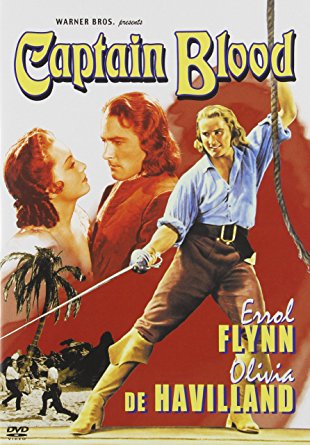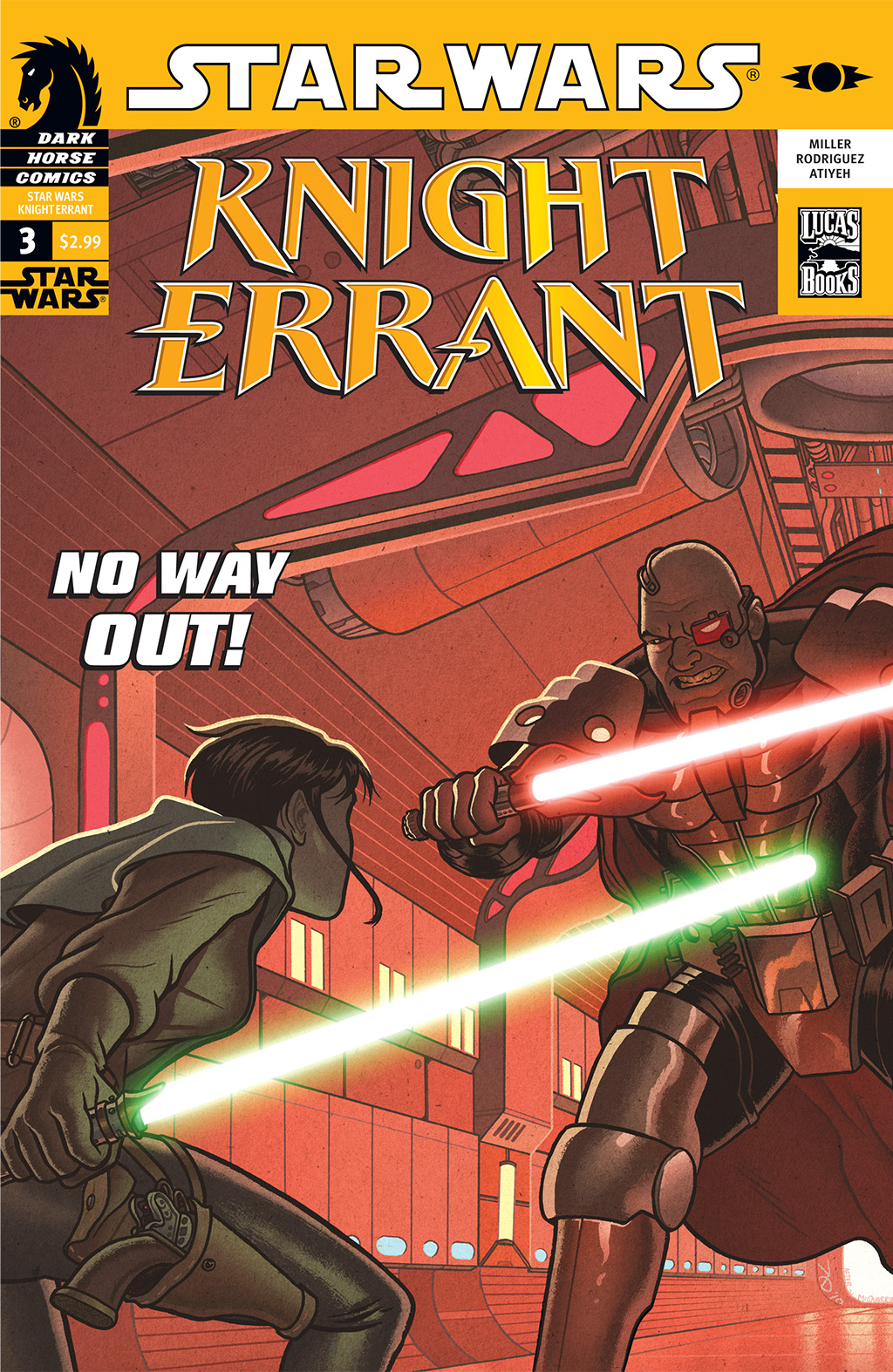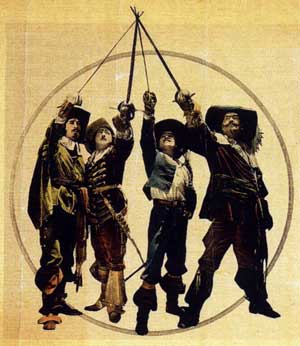
What is swashbuckling adventure? The term conjures images of dashing heroes rescuing damsels in distress via energetic swordfights in a romantic historical setting. It should be obvious that there is some of this in Star Wars’ DNA: it is dominated by dashing, high-octane heroic adventure, and sometimes openly apes the tropes of swashbucklers. Twice, a lightsaber-armed Luke Skywalker rescues Princess Leia and escapes by swinging across a gap on a rope (it’s not real swashbuckling adventure until somebody swings from a rope, vine, or whip). At its core, Star Wars is a spiritual descendant of swashbuckling adventure, which means the genre should occupy a significant place in the Expanded Universe.
There are certain tropes that go along with the swashbuckler: elaborate fencing-centric action sequences, romance with a damsel in distress, a bold and idealistic hero fighting against oppression or cruelty, a wicked villain in a position of power (who must inevitably be defeated in a swordfight), a historical setting of approximately 1200-1800 (or a fantasy version thereof). Think Robin Hood. But fundamentally, swashbuckling adventure is about an attitude. A swashbuckler’s approach to entertainment is energetic and flamboyant: its characters are larger than life, its plot one of constant thrills and excitement, its tone exuberant. It is almost never in question that the hero will win; the point of the story is to enjoy the fun-packed journey to victory.

As such, some stories can move beyond the swordfighting format to embrace the rollicking-adventure spirit of swashbuckling in new ways. In many respects, the serial age of Buck Rogers, Flash Gordon, the Green Hornet, and the Lone Ranger, which George Lucas drew on so heavily for Star Wars (and Indiana Jones), led the way in adapting the swashbuckling spirit to science-fiction, urban-crime, and Western formats. Gunplay and fisticuffs were able to replace swordplay as long as the action-packed, joyous sensibility remained the same. The superhero genre also found a way of modernizing and adapting the swashbuckling tradition, in which figures like Zorro and the Scarlet Pimpernel pioneered the idea of the idealistic, outrageously competent hero adopting a secret identity to fight evil. There is a reason that Bruce Wayne saw The Mark of Zorro on the night of his parents’ deaths.

The Star Wars films, with their dashing adventure, sword-swinging Jedi Knights, and serial roots, are likewise spiritual descendants of the swashbuckling style of adventure. Some of the Expanded Universe has reflected that general spirit of thrill-a-minute, exuberant action. Brian Daley’s Han Solo Adventures are a great example of the swashbuckling sensibility adapted to a gunslinging hero. Other works have hewn more closely to the classic paradigm. The comics of the seventies and eighties starred a swashbuckling Luke Skywalker, wielding his lightsaber in nonstop idealistic adventures and rescuing his fair share of damsels. More recently, Knight Errant sported a relatively rare iteration of the type — the female swashbuckler. Kerra Holt dueled her way through a collection of outsized villains in a series of heroic adventures. Despite the proliferation of Jedi protagonists, however, relatively few works fit comfortably within the straight swashbuckling genre.
These days, with an increasingly dour Expanded Universe, it would certainly be worthwhile for more works to attempt to capture the joy and energy of the swashbuckling spirit. Cheerful, high-octane adventure will never go out of style, and to a large extent Star Wars needs a significant base of it on which to build its weightier stories.
For this piece, however, I’m more interested in examining what Star Wars might do with the traditional swashbuckling formula. Jedi can fit comfortably into the swashbuckler’s role; it is simply a matter of their presentation. A high pulp-action content, some lightsaber-duel theatrics, and an idealistic, upbeat crusade against a larger-than-life evil are what’s called for. Throwing in romance, a staple of the swashbuckling genre, also wouldn’t hurt. It would be important that the protagonist come across with a strong, even outsized personality — swashbuckling adventure turns on the lead character, and generic types won’t cut it. This feature, emphasizing a larger-than-life hero, also makes this type of story fantastic for developing new leading characters. I can easily imagine a story about a Jedi Knight leading a slave revolt, or a gallant Jedi saving a kidnapped noble, that would lend itself to a swashbuckling treatment.

For Forceless protagonists, all hope of the traditional swordplay element isn’t lost. Knights of the Old Republic introduced a period in which technological shifts had once more made melee combat prominent, and more works could easily be set in that era, or similar ones. Indeed, a “historic” setting would suit the feel of a swashbuckling adventure, and in turn, a swashbuckling approach could help lend a “historical” feel to stories set in the Old Republic, which have largely abandoned the attempt to summon that feel through archaic design aesthetics. I’ve always thought that more could be done with Han Solo’s ancestors — the royal house of Corellia — and brash Corellian prince-admirals would seem perfectly suited to swashbuckling stories. A Solo heir who ran off to become a scoundrel, only to return to his duties once his pirate associates threatened the Corellian system, could be a solid basis for piratical adventures in a traditional vein.
For a genre that has so influenced Star Wars, it seems a pity that we don’t get a few more swashbuckling stories. They are a classic form of pure adventurous fun to which the Star Wars galaxy is well suited, they are excellent for developing strong lead characters, and they could be a great way of exploring settings from Star Wars’ past.
